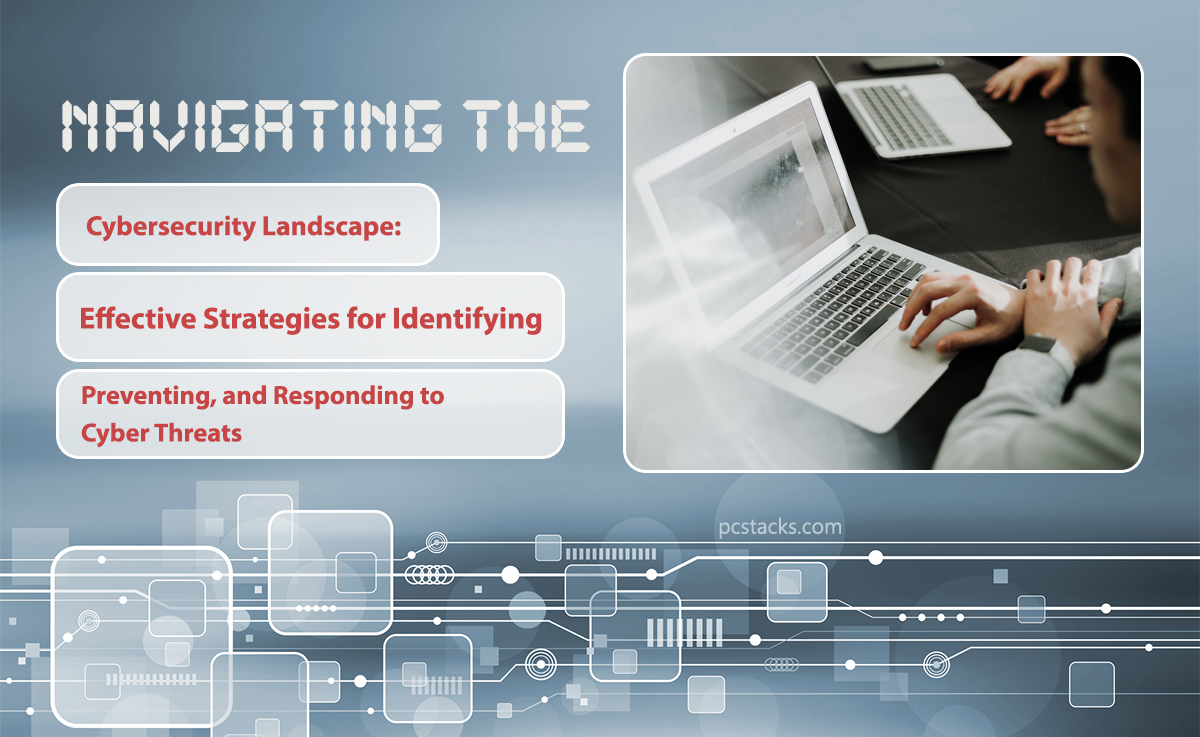Plotting a Course Through Cybersecurity: Pinpoint, Deter, and Tackle Cyber Threats
In a world turning digital, business has a new buzzword – cybersecurity. No longer just a tech issue, it’s now a critical business concern. Why? Cyber threats don’t just evolve. They also level up, turning cybersecurity into a dynamic challenge. So how do we keep pace? The solution lies in a proactive three-pronged strategy: pinpointing, deterring, and tackling cyber threats.
Helpful tools like Guardio are the co-pilots in this journey, arming organizations with superior threat detection and response mechanisms. While Guardio is a crucial ally, total cybersecurity demands a comprehensive plan. Let’s walk you through strategies to ensure your business can outsmart cyber threats.

Table of Contents
Deciphering the Cybersecurity Terrain
Diving into cybersecurity? First, get a lay of the land. Picture a labyrinth filled with varied threats – from crafty malware, sneaky ransomware, to insidious phishing and daunting data breaches. Cyber felons are continually inventing ways to exploit weak spots, hence, businesses must stay one step ahead with the freshest threat intelligence.
Complicating matters are factors like the growing remote work trend and the Internet of Things (IoT). These widen the potential battlefield for cyber threats, with employees tapping into sensitive data from sundry devices and locales. Navigating cybersecurity has never been more labyrinthine.
Pinpointing Cyber Threats
The first beacon in our cybersecurity journey? Pinpoint potential cyber threats. Several strategies can help us do just that:
Threat Intelligence:
This involves collecting and analyzing information about potential threats to help organizations predict and mitigate cyber attacks. The use of threat intelligence platforms and software can streamline this process, helping businesses to identify patterns and trends in cyber threats.
Vulnerability Assessment:
Consistently assessing vulnerabilities can unearth system weaknesses that cyber felons might target. It’s all about meticulously inspecting your network, systems, and applications, pinpointing vulnerabilities, and then promptly plugging these gaps.
Employee Training:
People are often the weakest link in cybersecurity. Regular employee training can help identify phishing attempts and suspicious activity, thereby preventing a significant number of potential cyber threats.
Preventing Cyber Threats
Once potential threats have been identified, the next step is prevention. There are several approaches to prevent cyber threats:
Implement Strong Security Policies:
A comprehensive cybersecurity policy is an essential element of any organization’s defense strategy. This policy should cover password requirements, access controls, and incident response procedures.
Use of Advanced Tools:
Cybersecurity gear such as firewalls, intrusion spotting systems, and solutions akin to Guardio form our first line of defense against cyber threats. They tirelessly keep an eye on network traffic, hunting for any hint of malevolent activity.
Regular Software Updates:
Outdated software often has vulnerabilities that can be exploited by cybercriminals. Regularly updating software ensures that these vulnerabilities are patched, thereby preventing potential attacks.
Responding to Cyber Threats
Despite the best prevention strategies, cyber threats can still materialize. When this happens, timely and effective response is critical:
Incident Response Plan:
An incident response plan outlines the steps to be taken when a cyber threat is detected. It should cover threat containment, system recovery, and communication strategies.
Regular Drills:
Regular drills can help ensure that the incident response plan is effective and that everyone knows their roles when a threat materializes.
Post-Incident Analysis:
After the threat has been dealt with, it’s important to conduct a post-incident analysis. This helps identify any weaknesses in the response strategy and provides insights on how to improve for future incidents.

The Role of AI and Machine Learning
Of late, AI and machine learning are emerging as trusty aids in our cybersecurity voyage. They’ve got an uncanny knack for spotting patterns and oddities that might hint at a lurking cyber threat.They can also automate routine tasks, allowing cybersecurity professionals to focus on more complex issues.
Furthermore, machine learning can predict future attacks based on historical data, enabling proactive defense strategies. As such, investing in AI and machine learning technologies is a worthwhile consideration for businesses seeking to bolster their cybersecurity.
To sum up
Navigating the cybersecurity landscape requires a proactive and comprehensive approach. By understanding the landscape, identifying potential threats, implementing prevention strategies, and preparing for response, businesses can effectively safeguard their operations against cyber threats. Furthermore, embracing new technologies like AI and machine learning can significantly enhance these efforts. In the rapidly evolving world of cyber threats, staying one step ahead is the key to maintaining robust cybersecurity.




